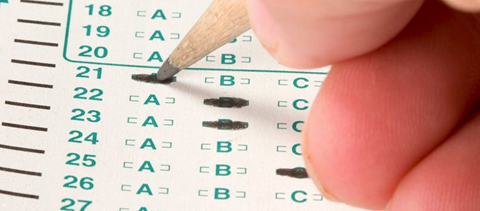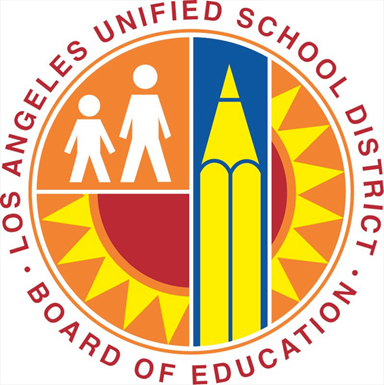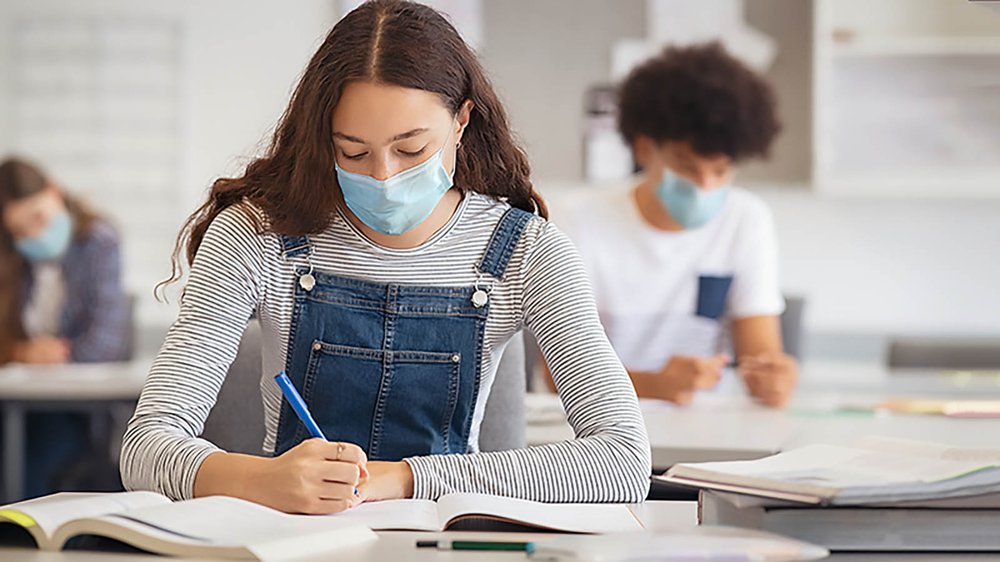To test or not to test? Educators weigh the value of standardized testing during a pandemic – By Kelly Field, The Hechinger Report
When schools in Columbus, Ohio, opened up classrooms this fall for the state’s third grade reading exam, just over a third of students showed up. The rest stayed home, for reasons district leaders can only guess at.
Some parents may have worried their child would contract the coronavirus, despite the district’s strict safety protocols. Others might have lacked the time or transportation to get their child to school. And some parents may have figured it wasn’t worth the effort or risk, since the state has temporarily waived a requirement that students pass the test to advance a grade, said Machelle Kline, the district’s chief accountability officer.
Kline said she’s confident more students will take the end-of-year tests in March and April, when the city’s elementary schools are scheduled to be open to all students. In the meantime, teachers are using other tools to identify the struggling readers the state test missed, including the use of assessments that can be taken at home.
But research by one of the nation’s major test-makers, NWEA, suggests that some of the most vulnerable remote learners are also skipping the interim tests meant to measure academic growth. That leaves districts like Columbus, where students in grades 6-12 are still studying online, with an incomplete picture of the pandemic’s impact on student learning.

'Hite offers school tour to show Philadelphia is ready for hybrid reopening – By Dale Mezzacappa, Chalkboard Philadelphia
As the School District of Philadelphia and the teachers union wait for the results of mediation, Superintendent William Hite defended the district’s urgency to begin hybrid learning for the youngest students and raised the possibility of extending the school year.
Hite also suggested that some school buildings could open to students, while others that may need to improve their ventilation systems could remain closed.
“Right now, this is an all or nothing conversation,” he said Thursday at a press conference. “If there are schools that people are worried about, then let us mediate those schools. If it’s the 32 schools with fans in the windows, then let’s bring the others back and not hold everybody to the same standard when we know we have schools that are safe to take children today.”
About 9,000 students from pre-kindergarten to second grade are due back Feb. 22 under Hite’s plan, a timetable he said he still hoped could be met. He expressed frustration with what he described as the slow pace of mediation, saying that the first meeting between the parties did not occur until Wednesday.
Spokeswomen for the city and the union both said the mediator, Dr. Peter Orris of Chicago, has been reviewing documents from the district and the union since last week and that the process is going as planned. The two sides had additional meetings Thursday and are planning more Friday, they said.

How are schools remaining IDEA compliant during COVID-19? – By Kara Arundell, K-12 Dive
This is the second installment of a two-part deep dive on the increased legal challenges districts face under the Individuals with Disabilities Education Act during the COVID-19 pandemic. For part one, click here.
When Mitchell Yell, a special education professor at the University of South Carolina, helped the South Carolina Department of Education craft guidance for serving students with disabilities during COVID-19, he wanted to make sure teachers and school administrators heard the important message that there was no wiggle room on the requirement to provide IEP-eligible students their guaranteed individualized services despite school closures or socially distanced learning formats.
So he recorded an hour-long explanation of the guidance that educators could listen to on repeat. “We wanted to tell them right away you still have to offer [a free, appropriate public education] to students with disabilities. It might look different, but you still have to do it,” Yell said.
Along with trying to support educators’ efforts to serve students during these unique circumstances and remain compliant with the Individuals with Disabilities Education Act, the effort was also meant to help schools avoid litigation for IDEA potential violations.
Parents of students with disabilities can directly sue a school district for failure to provide FAPE and potentially receive “compensatory education” when a district is found at fault for not providing services as outlined in a student's IEP.

California teachers grapple with grading nearly a year after initial school closures – By Sydney Johnson, EdSource
As schools grow more familiar with distance learning, one key element continues to baffle even expert teachers: assigning grades in an online classroom.
Many California school districts altered grading policies when schools abruptly closed last spring so that students’ grades could only improve from where they were at just before the sudden stay-at-home order. In those districts, teachers did not lower students’ grades if they were struggling academically.
Other districts switched to pass/fail systems. But this school year, most schools are back to traditional A-F grading scales, creating an all-new learning curve for teachers who must now grade students from behind a computer screen.
The issue is even more pressing for districts that have seen an uptick in Fs and Ds during distance learning. In Los Angeles Unified, California’s largest district with more than 600,000 students, the number of Ds and Fs in grades 9-12 increased by 8.7 percentage points in the fall compared to the same time period last year, according to data included in a district directive to give students more time to pull their grades up.
The data also showed that the gap in the percentage of Ds or Fs between African American (23.2%) and Latino (24.9%) students and their white (12.9%) and Asian (7.6%) peers has widened since last school year. The findings were based on 876,074 total marks that students in grades 9-12 received in the first 15 weeks of the fall term.












